Luigi Sauro
CQE in OWL 2 QL: A "Longest Honeymoon" Approach
Jul 22, 2022Abstract:Controlled Query Evaluation (CQE) has been recently studied in the context of Semantic Web ontologies. The goal of CQE is concealing some query answers so as to prevent external users from inferring confidential information. In general, there exist multiple, mutually incomparable ways of concealing answers, and previous CQE approaches choose in advance which answers are visible and which are not. In this paper, instead, we study a dynamic CQE method, namely, we propose to alter the answer to the current query based on the evaluation of previous ones. We aim at a system that, besides being able to protect confidential data, is maximally cooperative, which intuitively means that it answers affirmatively to as many queries as possible; it achieves this goal by delaying answer modifications as much as possible. We also show that the behavior we get cannot be intensionally simulated through a static approach, independent of query history. Interestingly, for OWL 2 QL ontologies and policy expressed through denials, query evaluation under our semantics is first-order rewritable, and thus in AC0 in data complexity. This paves the way for the development of practical algorithms, which we also preliminarily discuss in the paper.
Defeasible reasoning in Description Logics: an overview on DL^N
Sep 17, 2020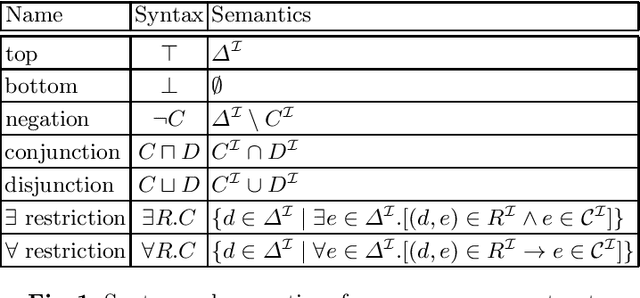
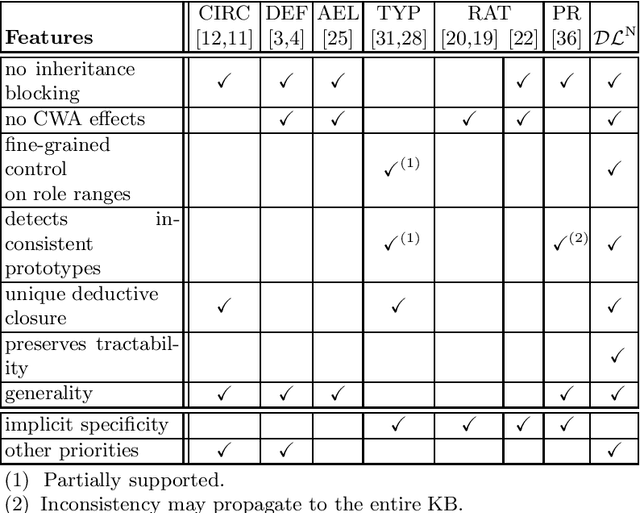
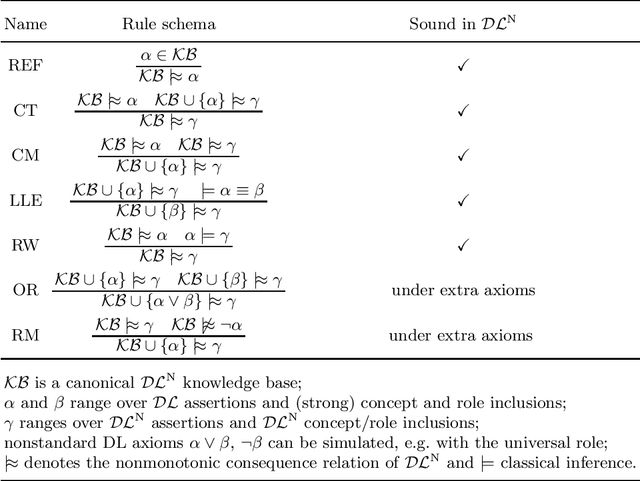
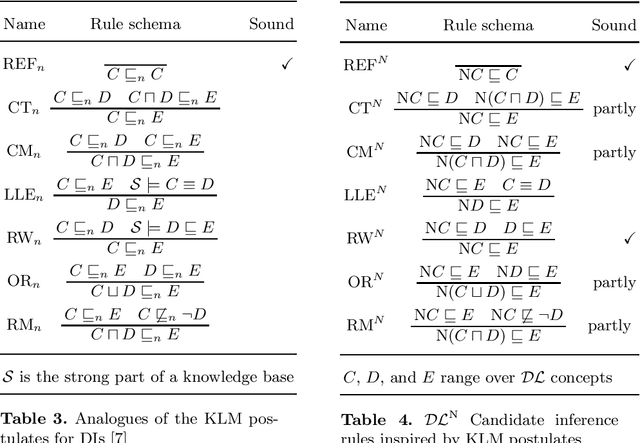
Abstract:DL^N is a recent approach that extends description logics with defeasible reasoning capabilities. In this paper we provide an overview on DL^N, illustrating the underlying knowledge engineering requirements as well as the characteristic features that preserve DL^N from some recurrent semantic and computational drawbacks. We also compare DL^N with some alternative nonmonotonic semantics, enlightening the relationships between the KLM postulates and DL^N.
Machine Understandable Policies and GDPR Compliance Checking
Jan 24, 2020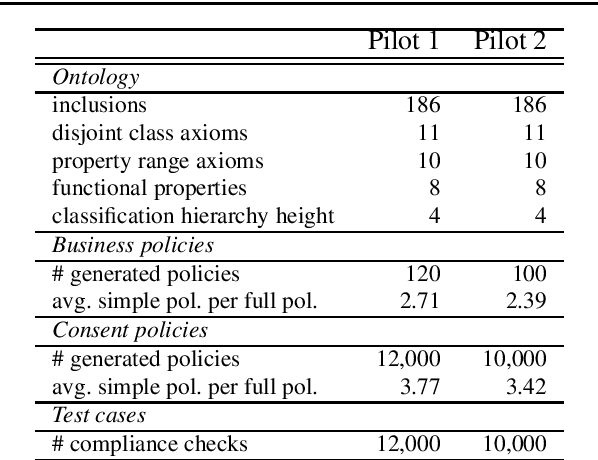
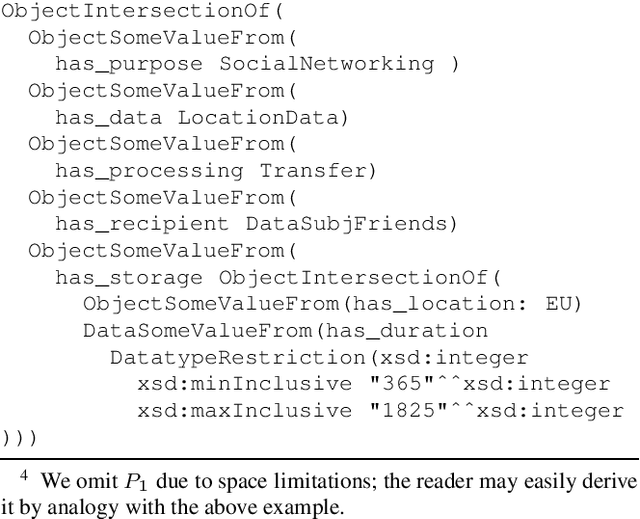
Abstract:The European General Data Protection Regulation (GDPR) calls for technical and organizational measures to support its implementation. Towards this end, the SPECIAL H2020 project aims to provide a set of tools that can be used by data controllers and processors to automatically check if personal data processing and sharing complies with the obligations set forth in the GDPR. The primary contributions of the project include: (i) a policy language that can be used to express consent, business policies, and regulatory obligations; and (ii) two different approaches to automated compliance checking that can be used to demonstrate that data processing performed by data controllers / processors complies with consent provided by data subjects, and business processes comply with regulatory obligations set forth in the GDPR.
Optimizing the computation of overriding
Jul 16, 2015

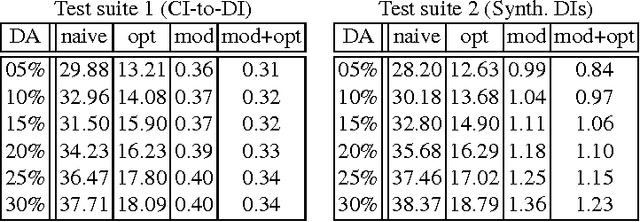

Abstract:We introduce optimization techniques for reasoning in DLN---a recently introduced family of nonmonotonic description logics whose characterizing features appear well-suited to model the applicative examples naturally arising in biomedical domains and semantic web access control policies. Such optimizations are validated experimentally on large KBs with more than 30K axioms. Speedups exceed 1 order of magnitude. For the first time, response times compatible with real-time reasoning are obtained with nonmonotonic KBs of this size.
Defeasible Inclusions in Low-Complexity DLs
Jan 16, 2014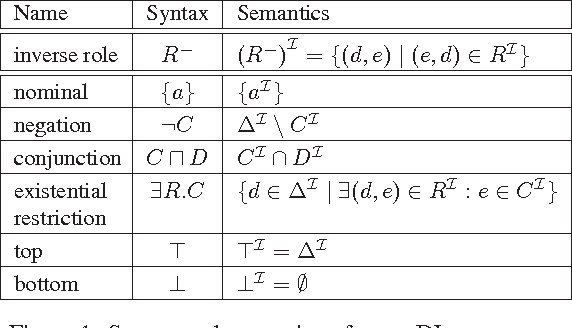
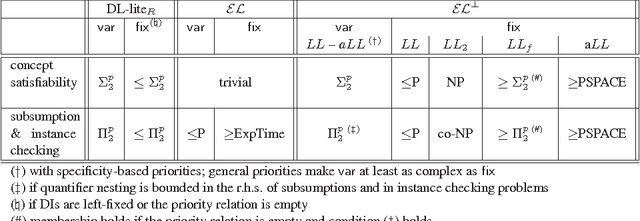
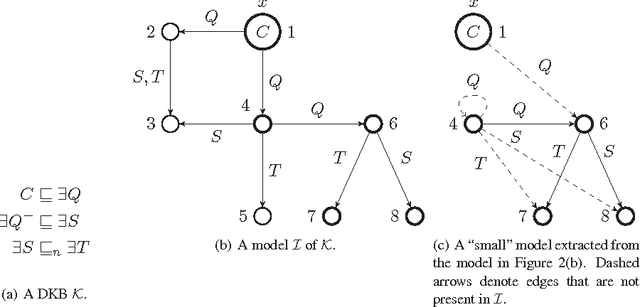
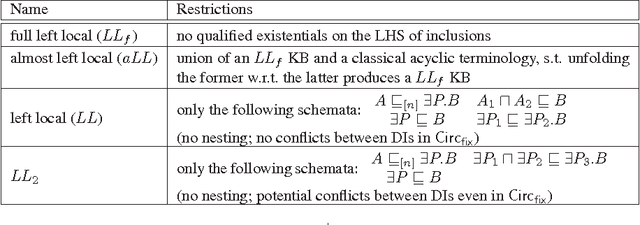
Abstract:Some of the applications of OWL and RDF (e.g. biomedical knowledge representation and semantic policy formulation) call for extensions of these languages with nonmonotonic constructs such as inheritance with overriding. Nonmonotonic description logics have been studied for many years, however no practical such knowledge representation languages exist, due to a combination of semantic difficulties and high computational complexity. Independently, low-complexity description logics such as DL-lite and EL have been introduced and incorporated in the OWL standard. Therefore, it is interesting to see whether the syntactic restrictions characterizing DL-lite and EL bring computational benefits to their nonmonotonic versions, too. In this paper we extensively investigate the computational complexity of Circumscription when knowledge bases are formulated in DL-lite_R, EL, and fragments thereof. We identify fragments whose complexity ranges from P to the second level of the polynomial hierarchy, as well as fragments whose complexity raises to PSPACE and beyond.
 Add to Chrome
Add to Chrome Add to Firefox
Add to Firefox Add to Edge
Add to Edge